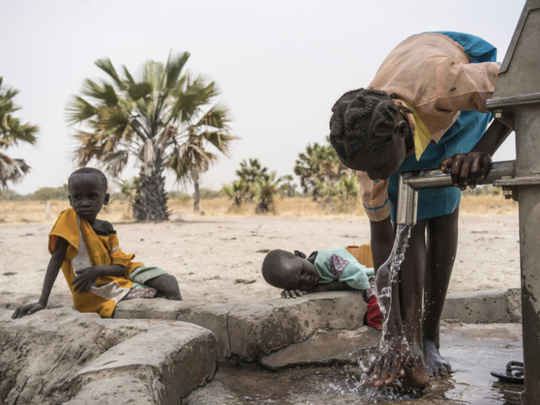
By Mohamed Abdel Raouf, Special to Gulf News
The United Nations has designated March 22 as World Water Day (WWD). Each year, the day highlights a specific aspect of fresh water. Under the theme ‘Water and Wastewater’, WWD 2017 provides a significant occasion to highlight the synergy between water and waste water in the quest for sustainable development.
Water resources are of particular importance for an arid country like the United Arab Emirates (UAE). The limited availability of fresh water in the UAE has for decades presented a major challenge to the people and the government. Scarce rainfall, coupled with a high rate of evaporation, consumption and urbanisation, leads to deficits in water budgets.
In order for the UAE to maintain its fast-growing development in all aspects of life, it must take all necessary measures and polices to guarantee the availability of water resources for various uses. Otherwise, the country is very likely to face many potential problems on the economic and social fronts related to the availability of water.
Thus, the WWD 2017 theme is significant for the UAE because waste water is perceived as a valuable resource in the circular economy and its safe management as an efficient investment in the health of humans and ecosystems.
Typically, water is considered and managed as a scarce resource. Everybody thinks that water volumes are fixed. Thus, any water set aside for one group or country or region or sector is presumably unavailable to others.
However, water is a unique resource as water volumes are not fixed at all. Quite to the contrary, water resources are a flexible and expandable.
For instance, new technologies, shared experiences and best practices allow the same water resource to be used in a multiple ways by multiple users several times. In addition, the use of embedded or virtual water, that is, water used in production of goods and services, can mitigate water shortages in many parts of the world.
It is worth mentioning that the UAE is one of the pioneer countries in the region and globally when it comes to cloud seeding and artificial rain-making, with the country conducting some artificial rain-making experiments in midsummer. Usually, cloud seeding takes place over the eastern mountain ranges on the border with Oman to raise water levels in aquifers and reservoirs in the area. Additionally, cloud seeding takes place over cities in the UAE.
Cloud seeding is a clear example that water volumes for a specific country are not fixed.
The WWD theme for 2017 — ‘Water and Waste water’ — is a clear example that water is an expandable and flexible resource. In fact, treated waste water can be recycled and used over and over again, endlessly, thus adding up to the total available water supply of a country or city or factory... etc.
Treated waste water represents one of the most main alternatives that can be used to meet some of the present water requirements, thus lessening the long-term supply-demand imbalance. At present, the UAE is operating modern treatment facilities with tertiary and advanced treatment capabilities. Treated water is used mainly for urban purposes, including irrigating gardens, green spaces, as well as in reforestation efforts, the irrigation of fodder crop, and highway landscaping, to list a few.
It is worth mentioning a couple of obstacles concerning the use of treated water. These include the lack of transmission and distribution networks to supply customers (which are mainly forests and private companies such as golf resorts); as well as the cultural aspect, another main obstacle, as it is still difficult to convince consumers such as farmers to use recycled water.
Therefore, the reuse of treated waste water offers a sustainable solution to meet the growing water demand in a water-scarce country like the UAE. In addition, treated waste water helps protect ecology from polluted wastewater. Besides, it saves a lot of energy required for desalinated water and thus reduces the country’s carbon footprint.
In addition, sustainable water reuse practices are directly linked with United Nations Sustainable Development Goals (SDGs). The SDGs covers a wide range of drivers across the three pillars of sustainable development and include a dedicated goal on “water and sanitation” — SDG goal No 6 that sets out to “ensure [the] availability and sustainable management of water and sanitation for all.”
SDG No 6 focuses on the entire water cycle, including the management of water, waste water and ecosystem resources. With water at the very core of sustainable development, thus, any progress in wastewater recycling helps realise SDG No 6 and in turn, realising SDG No 6 would, in fact, go a long way towards achieving much of the 2030 agenda.
Last but not least, it is worth mentioning that water reuse and recycling is not only the responsibility of municipalities but also of individuals and corporates. Both can conserve water by recycling and reusing some of their water used in cleaning and washing, for instance, in irrigating the residential or company gardens. Some plants can install simple primary wastewater treatment facilities. This, in fact, is of great economic benefit as it would save the company a lot of money in the long run.
In addition, WWD 2017 is a good occasion for awareness campaigns to convince consumers such as farmers to use treated waste water that has the same quality as drinking water.
Dr Mohamed Abdel Raouf is an independent environment researcher.










